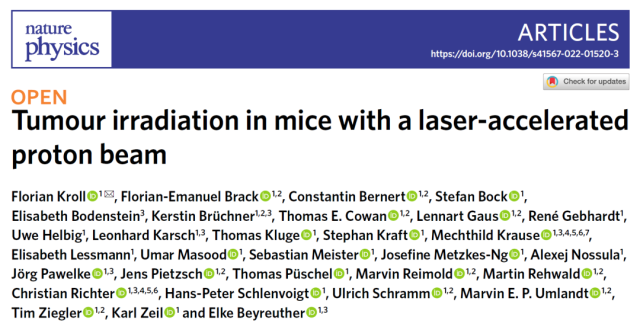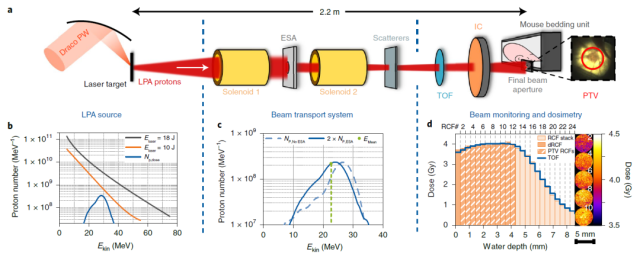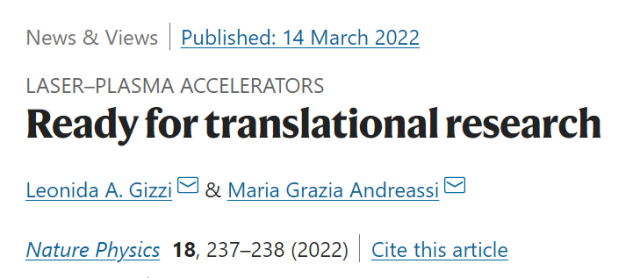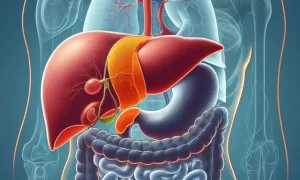Nature Physics: Laser-accelerated proton beam irradiation for tumor therapy.
- Normal Liver Cells Found to Promote Cancer Metastasis to the Liver
- Nearly 80% Complete Remission: Breakthrough in ADC Anti-Tumor Treatment
- Vaccination Against Common Diseases May Prevent Dementia!
- New Alzheimer’s Disease (AD) Diagnosis and Staging Criteria
- Breakthrough in Alzheimer’s Disease: New Nasal Spray Halts Cognitive Decline by Targeting Toxic Protein
- Can the Tap Water at the Paris Olympics be Drunk Directly?
Nature Physics: Laser-accelerated proton beam irradiation for tumor therapy.
- Should China be held legally responsible for the US’s $18 trillion COVID losses?
- CT Radiation Exposure Linked to Blood Cancer in Children and Adolescents
- FDA has mandated a top-level black box warning for all marketed CAR-T therapies
- Can people with high blood pressure eat peanuts?
- What is the difference between dopamine and dobutamine?
- How long can the patient live after heart stent surgery?
Nature Physics: Laser-accelerated proton beam irradiation for tumor therapy.
Radiation therapy using conventional accelerator proton beams has been used to treat different types of cancer.
Recent studies have shown that using ultra-high radiation dose rates several orders of magnitude higher than current clinical standards may be less likely to destroy healthy tissue surrounding tumor cells than using currently recommended radiation dose rates, an effect also known as the FLASH effect .
Laser plasma accelerators are a promising source of protons that can achieve ultra-high proton dose rates thought to produce the FLASH effect.
On March 14, 2022, researchers from the Helmholtz-Dresden-Rosendorf Research Center in Germany published a paper entitled: Tumour irradiation in mice with a laser-accelerated proton beam in Nature Physics , a sub-journal of Nature . Research Papers.
This pilot study reports the results of irradiating mouse tumors with protons generated by a stable, compact laser plasma accelerator . The findings demonstrate that the technique could be used in research with the goal of improving cancer radiation therapy.

The research team constructed a research platform that enables ultra-high peak dose rate irradiation of tumors in small animal models using a proton beam from a laser plasma accelerator.
The research team demonstrated that the accelerator can be used directly for radiobiological research, including studying the effectiveness of a uniform dose in slowing the growth of human tumors (head and neck squamous cell carcinoma) in the ears of mice. The authors used a sample size of 92 mice.

The inherently high dose rates of laser plasma accelerators demonstrate their potential value for studying the mechanisms behind the FLASH effect , according to a “News and Views” article in the journal Nature Physics , titled: Ready for translational research . The paper also points out that this is a promising step for further use of protons for ultra-high dose rate irradiation in translational research in the future.

Reference:
https://www.nature.com/articles/s41567-022-01520-3
https://www.nature.com/articles/s41567-022-01547-6
Nature Physics: Laser-accelerated proton beam irradiation for tumor therapy.
(source:internet, reference only)
Disclaimer of medicaltrend.org
Important Note: The information provided is for informational purposes only and should not be considered as medical advice.



